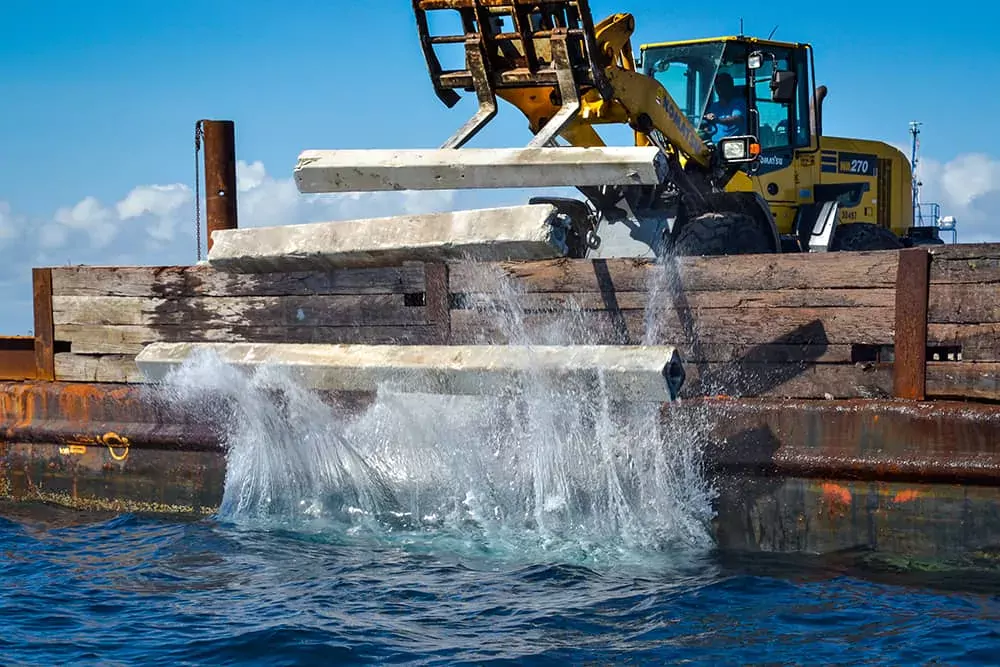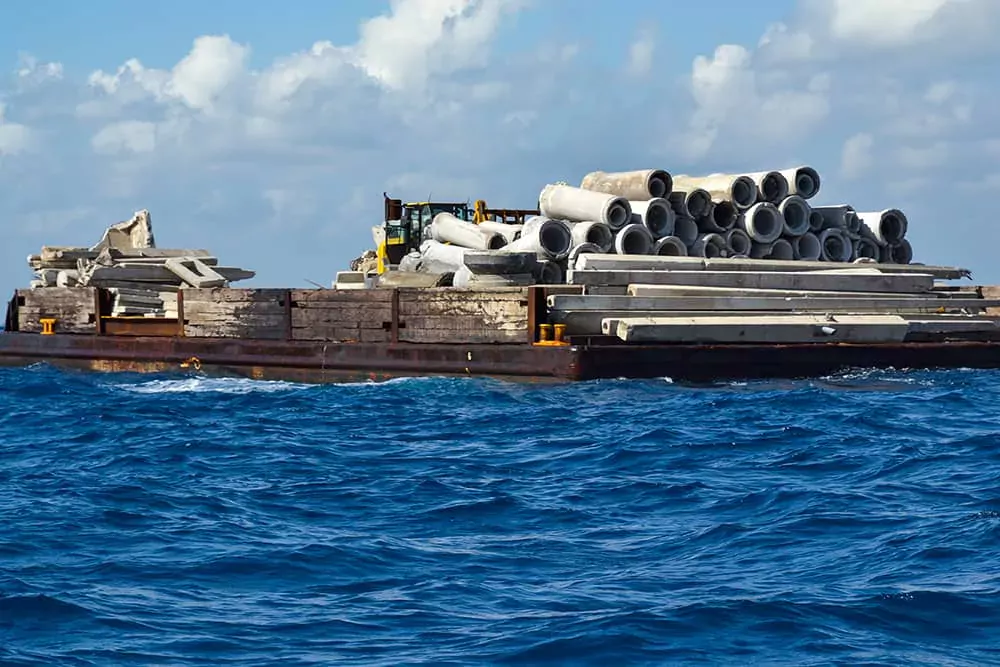Artificial Reef Program
Martin County’s Artificial Reef Program began in the 1970s, when a group of retirees and sport fishing enthusiasts led by Bill Donaldson – calling themselves the “Reeftirees,” began a movement to create self-sustaining marine habitats.
With numerous thriving natural and artificial reefs along Martin County’s shores, the area truly lives up to its reputation as the “Treasure Coast.”
Each reef offers a bounty of rich aquatic life, creating ideal locales for saltwater anglers and recreational divers.
Offshore, the prevailing north current allows boaters to begin at the southern end of these sites and drift north across a two-mile stretch of diverse reef environments.
The offshore reefs are located within the Donaldson, Ernst, Sirotkin and South County Reef Sites. Each of these four permitted areas contain several artificial reefs which have been deployed over the years. Additional reef materials continue to be added to these areas.
The Martin County Utilities and Solid Waste Department works with the Martin County Artificial Reef Program to secure materials of opportunity by allowing contractors to dispose of clean concrete free of charge and storing the material for the program.



